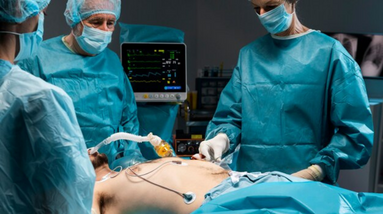Heart Valve Replacement

Heart valve replacement is a surgical procedure in which a damaged or diseased heart valve is replaced with an artificial valve or a biological valve. The heart has four valves – the mitral valve, tricuspid valve, pulmonary valve, and aortic valve. The valves control the flow of blood through the heart chambers and out to the rest of the body.
Heart valve replacement is usually done to treat conditions such as:
- Aortic stenosis: This is a condition in which the aortic valve becomes narrow and restricts blood flow from the heart to the rest of the body.
- Mitral regurgitation: This is a condition in which the mitral valve doesn’t close properly, causing blood to leak back into the left atrium.
- Mitral stenosis: This is a condition in which the mitral valve becomes narrow and restricts blood flow from the left atrium to the left ventricle.
- Aortic regurgitation: This is a condition in which the aortic valve doesn’t close properly, causing blood to leak back into the left ventricle.
There are two types of heart valve replacement procedures:
- Mechanical heart valve replacement: In this procedure, a mechanical valve made of durable materials like metal or carbon is implanted. These valves are long-lasting but require lifelong blood-thinning medication to prevent blood clots.
- Biological heart valve replacement: In this procedure, a biological valve made from human or animal tissue is implanted. These valves don’t last as long as mechanical valves, but blood-thinning medication is usually only required for a short time.
Heart valve replacement surgery is a major procedure that requires general anesthesia and a hospital stay of several days. Recovery time can vary depending on the patient’s age, overall health, and the type of valve replacement surgery performed. It’s important to follow the doctor’s instructions for post-operative care and attend regular follow-up appointments to ensure proper healing and management of any complications.
